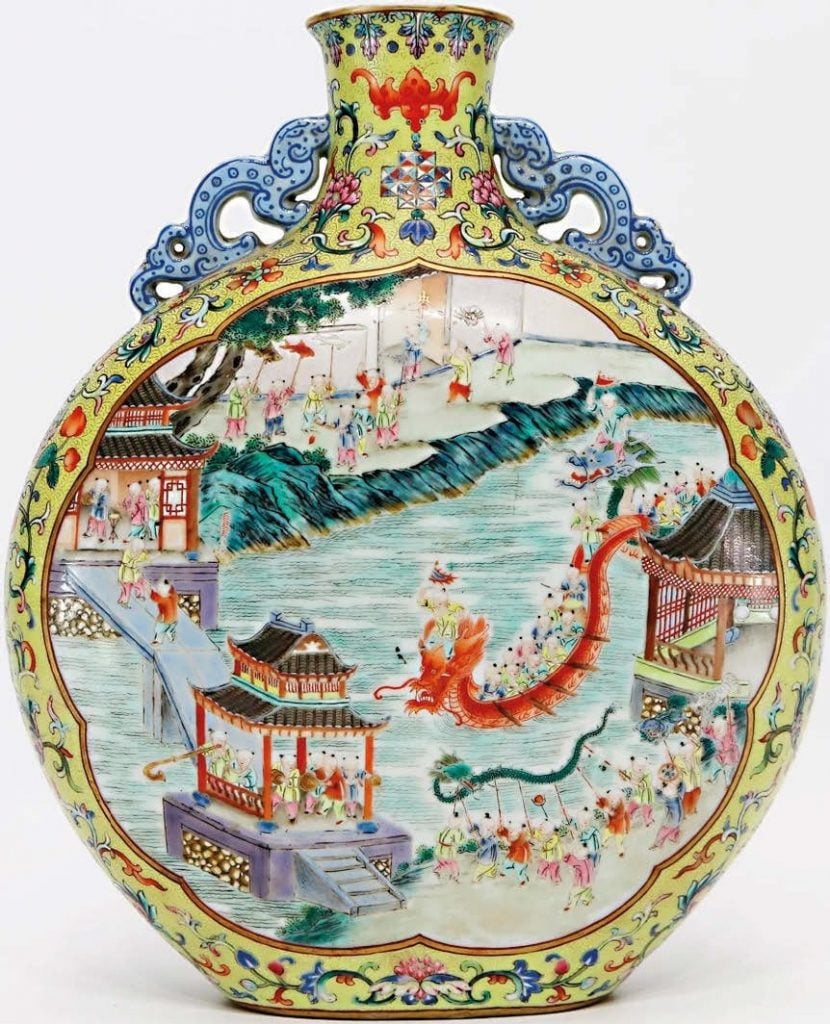The Back Room
Work of the Week: A Chinese Jiaqing Mark Moon Flask
Despite damage to its base, the vase sold for 75 times its presale estimate.

Despite damage to its base, the vase sold for 75 times its presale estimate.

Eileen Kinsella

Just ahead of the Lunar New Year, a rare Chinese moon flask sold for a whopping 75 times its high presale estimate at Dixon’s Crumpton Auction, a small auction house in Maryland. Estimated to sell for between $1,000 and $2,000, multiple bidders drove the price up to $155,000 at the sale, held on January 25.
The vase—which has a hole drilled through the insignia on its base, suggesting that it was previously used as a lamp—is believed to be from the imperial kilns for the Qing emperor Jiaqing (1796–1820). The damage to the object didn’t dissuade buyers since famille-rose-decorated moon flasks, or bianhu, are rare. Moreover, the yellow ground with a dragon boat race scene is considered highly desirable among collectors of Chinese art and antiquities.
A pair of similar moon flasks with marks for the emperor Qianlong (1736–96) were offered at Henry Adams in Chichester, England, in 2007, and sold for £760,000, or about $1.5 million. They were later sold at Sotheby’s in Hong Kong for around $4.5 million.
According to the Artnet Price Database, the most expensive moon flask ever to come to auction was a blue and white Yongle (1403–24) piece that sold for $10.9 million at Sotheby’s Hong Kong last October.
Work of the Week is excerpted from The Back Room, our lively recap funneling only the week’s must-know intel into a nimble read you’ll actually enjoy. Artnet News Pro members get exclusive access—subscribe now to receive this in your inbox every Friday.